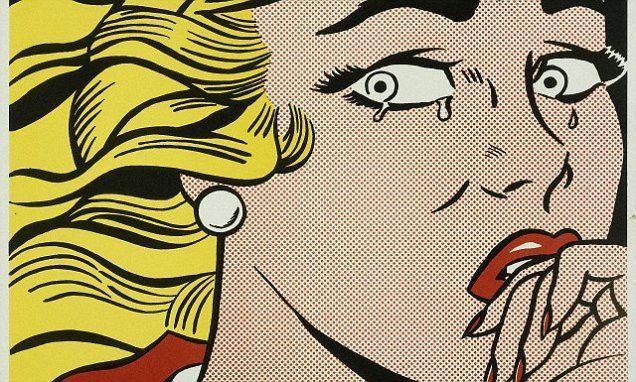 By Jane Barthelemy.
By Jane Barthelemy.
This article discusses our layers of fear as individuals and as a society, and how subconscious fear affects our health. What is fear? We view fear from both Western neurological and Chinese Medicine perspectives. How does chronic fear limit our brain’s cognitive function and condition our behavior? How does fear cause stress in the nervous system and distort our true experience of reality? How can fear over time ruin your health? How can we unplug a pattern of fear and stress in the nervous system? There are many ways to self-heal the fear pattern in your brain. One of the best tools is called Nadi Shodhana, alternate nostril breathing from Ayurvedic wisdom. It takes one minute to do, it is effective, and it is free!
What is fear?
Fear is defined as an unpleasant emotion caused by the belief that you are in danger, under threat, likely to experience pain, loss, or death. Fear can be conscious, such as when you know you’re being chased by a tiger. Fear can also be unconscious, meaning it is present on a deeper level, such as if you were in a car accident and didn’t fully calm down; or there was a traumatic event in your family history that continues as a pattern through generations. Myriad fear-related emotions exist, such as: angst, apprehension, dismay, disillusionment, depression, dread, hesitancy, horror, loneliness, panic, phobia, scared, fright, suspicion, terror, timidity, trepidation, and withdrawal.
What’s the True Source of Fear?
In his book, The Biology of Belief, cellular biologist Bruce Lipton, PhD, reveals the latest biomedical research. He explains how emotions and beliefs form the foundation of your physical body, your nervous system, and your health. With each new pulsation of information, powerful messages flow through your nervous system, endocrine glands, meridians, and connective tissues. Our external senses are receiving new input every moment through our eyes, ears, skin, smell, etc. At the same time our internal communication networks are also working hard to interpret these signals to choose how we perceive reality. We decide what is real based on our previous experiences, cultural programming, expectations, and beliefs. According to Dr. Lipton, these internal interpretation systems have a powerful influence on our experience, many times greater than our external senses.
Sympathetic vs. Parasympathetic
Within the central nervous system exist two polar extremes, or ways of being: 1) The Sympathetic Nervous System is associated with fear, the fight – flight response, emergency energy production, and the inhibition of digestion. 2) The Parasympathetic Nervous System is associated with “rest and digest”, which allows us to us calm down and return to homeostasis.
The HPA Glands that Control Fear
As we flow back and forth between sympathetic and parasympathetic, three important endocrine glands are at play. They guide our alternations between the two polar extremes. The Hypothalamus-Pituitary-Adrenal glands together are known as the HPA axis. The complex interactions between these three glands have a great influence on how we experience emotions, especially fear. When they’re working correctly, they fire up and calm down equally well. However when they are over-used or dysfunctional, they fire up and remain in a chronic state of stress and agitation, although this is often invisible to outside observers.
What is Chronic Fear?
Not a popular conversation topic, however if we look around, we notice that fear is everywhere in the air. It resides in each of us, and in the people around us. A deep layer of fearful thinking is accepted and often encouraged in our society, almost as an unspoken agreement. Indeed, our families, media, schools, and religions are organized around a measure of fear, which is generally used to control our behavior. Generations of accepted fear-based ways of thinking form the foundation of our basic perceptions of the world. These fear patterns are so automatic that if we could let go of our own fear for one moment, we would not recognize ourselves. And if we released fear as a culture, we would suddenly find ourselves in a totally different society. It would be a different world. The fear is so deep.
Chinese Medicine Associates Fear with the Kidneys and the Water Element.
The Kidney represents our foundational and most basic energy source that sends vital resources to all other parts of the body. The Kidney rules our will to act, to make effort, and to persevere. The Kidneys are seen as the wellspring of our creativity, generosity, libido, and sexuality. The Kidney system produces strong bones, and bone marrow where blood cells and rejuvenating stem cells are produced. The Kidney rules brain power, endocrine function, and the nervous system. Other areas of the body closely tied to Kidney function are the adrenal glands, the teeth, ears, bladder, and sexual organs. Kidneys and the Water element are associated with Winter and cold months of the year, when we must use self-care to guard our vital resource. The Kidneys help protect us by generating awareness of danger, or fear.
How is Fear Linked to Your Health?
When you carry a pattern of fear in your nervous system, you live with a high level of internal agitation and stress. It might not be observable to the average person next to you, but on the inside, it determines your responses in the world. How does fear affect your health? Internal stress caused by a pattern of fear in the nervous system causes a complex series of health problems that begin innocently, but continue to create havoc, much like a chain reaction, or falling dominoes in your body. Your HPA endocrine glands signal imminent danger, the lungs breathe quickly and superficially, cognitive reasoning in the brain stops, heartbeat is faster, blood pressure increases, blood moves out of the organs into the limbs, cellular repair slows down, there is tension in the muscles, and digestive organs stop working. Yes, these are all appropriate physical responses if you’re being chased by a tiger. But they’re hardly necessary if you’re working in an office every day. Finally, after years of danger signals pulsing through your body, fear takes a toll on your health. It may express itself in any number ways, such as high blood pressure, gastric reflux, ADD, liver disease, depression, a nervous twitch, heart palpitations, poor blood circulation, panic attacks, poor lymphatic function, leaky gut, gallstones, or constipation. Ruining our health is bad enough. But even worse, fear limits our ability to perceive reality, to see the world, and to enjoy our lives. It restricts our freedom to express ourselves creatively, and to reveal our true destiny in life.
Unplug Your Fear
Are you one of the majority of humans that carry a pattern of fear? If so, how can you unplug it? Should you see a therapist regularly? How many years will it take? Nope, you can dissolve fear by yourself for free with this simple Ayurvedic breathing technique. Practice it whenever you want to release fear patterns in the body and nervous system.

Nadi Shodhana
What’s Nadi Shodhana Breathing?
It is Ayurvedic Breathing, a type of Pranayama for Calming the Brain. Nadi Shodhana, or “alternate nostril breathing,” is a simple but powerful technique that deeply relaxes the mind and body. Use it anytime to quiet your mind and nervous system. It’s a great tool for beginning a meditation session, and it is also a soothing practice to calm fear, quiet racing thoughts, and release stress. It’s great before bed if you have trouble falling asleep. There are several different styles of Nadi Shodhana, but they all serve to regulate the flow of air through your nasal passages. Nadi Shodhana means “clearing the channels of circulation.”
Here’s how to do it:
Hold your right thumb over your right nostril and inhale deeply through your left nostril.
- At the peak of your inhalation, close off your left nostril with your third and fourth fingers, then exhale smoothly through your right nostril.
- After a full exhalation, inhale through the right nostril, closing it off with your right thumb at the peak of your inhalation.
- Continue performing Nadi Shodhana for the next few breaths, following the same pattern. Your breathing should be effortless, with your mind gently observing the inflow and outflow of breath.
- Count heartbeats or seconds as you breathe. Start with 6 beats on the inhale, and 9 beats on the exhale. If it is comfortable, increase inhale to 9, exhale to 12 beats.
- Use a longer exhale than inhale. After a few minutes you’ll feel relaxed and calm. (Warning: If your inhale is longer than exhale, this exercise will rev you up!)
Benefits of Nadi Shodhana
- Reduces Stress
- Increases brain cognitive function, i.e. makes you smarter
- Reduces nervous over-reactions, calms panic
- Restores blood circulation to the organs
- Improves cardiovascular and lymphatic circulation, supporting clearance of toxins
- Improves breathing, resulting in better tissue oxygen O2 saturation
- Improves musculoskeletal tone
- Improves balance between sympathetic and parasympathetic nervous systems
10 More Bonus Tools for De-Programming Fear:
- Keep fear moving through the body and out: Regular exercise, Walking in Nature, Sunlight, Qigong
- Avoid Foods and Cold Drinks that Drain Kidney Qi: Skip sugars, coffee, caffeine, cold foods and iced beverages. Cold foods and drinks rob our Kidney Qi in order to raise their temperature to 98.6. Stay warm and keep the body organs at 98.6 degrees.
- Do a daily loving foot massage, starting with Kidney-1, the Yong Quan point.
- Positive Self-Dialogue: Sounds silly, but it works! Example: “Good job! Oh, that’s perfect. There’s nothing to worry about here. I’ll just let that go. What IS this fear I feel? I can simply face it, and it vanishes. I’m completely safe here. I love and respect myself so much that I’ll…. Wow, great time for a nice hot bath! Wonderful! I’ll just hug and reassure my inner child. This is not my business – I’ll just send love to that person. Perhaps I used to need that fear, but now it’s not helpful. I feel better already! Congratulations for noticing my inner fear. Easy now, breathe! etc…”
- Build Healthy flow of body liquids: esp. Blood and Lymph: Qigong Shaking, Rebounding, Daily aerobic movement.
- EFT – Emotional Freedom Technique, is a powerful self-healing system that uses acupuncture points and tapping to release your emotions including fear, in just a few minutes. See my article: EFT – Emotional Freedom Technique.
- Biodynamic Craniosacral Therapy. Builds healthy synergy in the cerebro-spinal fluid and the nervous system. Resolves physical blocks, internal holding patterns, trauma, and fear that are ready to release.
- Strengthen Protective WeiQi – Qigong, Taiji, Internal Alchemy, Qigong form Standing like a Stake, Build Lymphatic system, Strong meridian flow, Positive attitude, Healthy Self-Esteem, Natural fiber clothing, bed linens, blankets, night wear, underwear, jackets, coats. Turn off WiFi at night.
- Qigong Forms for Kidney or Fear: Kidney Slapping, Inner Reaping, Beholding, Mendicant, Five Elements, Calming the Waters. LaoTong Strokes Beard, Straddling the River (from Yang Tonifying), Shamanic Liver fist.
- Turn off your TV – Unfortunately media powerfully reinforces our fear-based patterns. Just turn it off.



